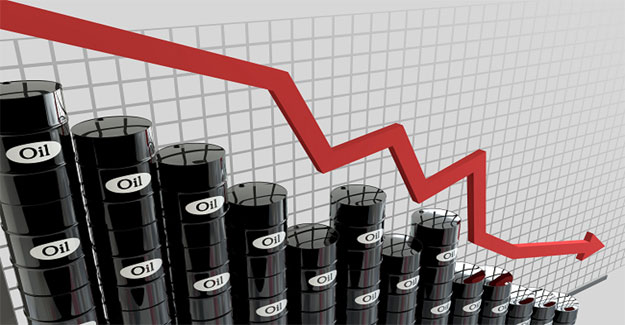
Oil Market Collapses, Polyester Industry Should Be Alert
US oil prices crashed to the negative territory for the first time in history, fueled by pandemic-related demand shock and oversupply fears. The West Texas Intermediate (WTI) for May delivery shed 55.9 US dollars, or over 305%, to settle at -37.63 dollars a barrel on the New York Mercantile Exchange, implying that producers would pay buyers to take oil off their hands. It marked the first time an oil futures contract has traded negative in history, according to Dow Jones Market Data. WTI crude oil futures prices plummeted because traders were forced to close long positions to avoid buying physical crude without storage capacity. Increasing pressure has caused crude oil to plunge to a negative value in recent months, and the polyester industry also witnessed high inventory burden. Based on China customs statistics, exports of textiles and apparels in China decreased by 20% y-o-y in Jan-Feb, 2020, with the y-o-y decrement of 8% compared with the same period of last year (exports of textiles and apparels in Jan-Feb, 2019 fell by 12% on the year), which was mainly attributed to the Sino-US trade conflict and the Covid-19 outbreak. Some foreign orders were cancelled or delayed amid the pandemic in March, even as March seasonally receives more orders. The spread of pandemic intensified worldwide since April. EU and US were major traditional export destinations for Chinese textiles and apparels, occupying around 34% of the total. Europe and US were seriously hit by the Covid-19 pandemic, leading to lockdowns and standstill in consumption. The dramatic reduction of demand for textiles and apparels in EU and US greatly impacted the exports of textiles and apparels in China. China's export situation will worsen in April-May. The operating rate of fabric mills started decreasing from late-March for the second time, and massive plants shut down for holiday during the Tomb-sweeping Festival (Apr 4-6). Although the run rate of downstream companies rose after holiday, it remained at 50-60% and may reduce further in end-April with the coming of the May Day holiday (May 1-5). The operation rate of downstream and upstream market diversified this year, which seemed to be irrational. Capacity expansion peaked this year in polyester market and upstream market, while end-user demand substantially shrank on the Covid-19 outbreak. Stocks of polyester market and upstream feedstock market were bound to accumulate substantially. However, supply shrinkage of upstream market was not apparent although end-user demand dramatically decreased and the run rate of fabric mills substantially declined, which resulted into rapidly mounting stocks of the whole polyester industry chain. The operating rate of polyester market stabilized, that of PTA was rising, that of PX was not low, and that of MEG dipped greatly. But stocks of MEG kept mounting as Zhejiang Petrochemical and Hengli Refinery started operation at the beginning of 2020. By the end of April, the stocks of PTA amounted to 4 million tons and those of MEG was near 3 million tons. The delivery risk of the WTI May contract has a good lesson for the delivery of liquefied commodities with high inventory. Although high-stock PTA is not a liquefied commodity, the delivery risk of May contract seems to be basically resolved from the current position of 260,000 lots, which is still not sure. Even if it is resolved but the pandemic continues into Q3, the expected replenishment does not appear in Q3 and the September warehouse receipt cannot be carried over, then the delivery risk of September contract will be greatly increased.
Textile Excellence
If you wish to Subscribe to Textile Excellence Print Edition, kindly fill in the below form and we shall get back to you with details.








